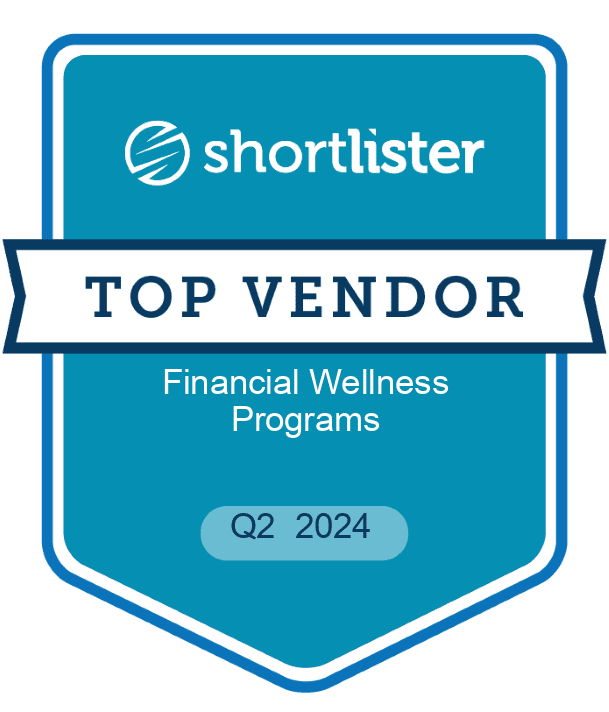Women & Financial Wellness in the Workplace
Since the start of the COVID-19 pandemic, American employees have faced job loss, financial instability, and money-related anxiety. These changes have disproportionately affected women at a higher rate than men.

Since the start of the COVID-19 pandemic, American employees have faced job loss, financial instability, and money-related anxiety. These changes have disproportionately affected women at a higher rate than men. Six out of 10 women cite financial concerns as their top source of stress (morganstanley.com). According to Morgan Stanley, “pressures of the pandemic have resulted in a staggering two million female workers considering downshifting their careers or leaving the workforce altogether” (morganstanley.com).
Given this trend, innovative and forward-thinking employers are offering financial wellness programs to their employees, many with affinity programs that address the unique concerns and considerations that professional women often face.
Challenges Women Face in the Workplace
With a marked increase in overall job instability and unemployment, 2021 has been a challenging time for women in the workplace, and their financial wellness has been impacted as a result.
According to a study conducted by Bank of America, 41% of women feel financially stable compared to 58% of men (benefitnews.com). Bank of America’s study also found that “women have more credit card debt (56% women vs. 43% men) and student loans (30% women vs. 11% of men)” (benefitnews.com).
In addition to increased debt, women, on average, still make less money than men, resulting in less cash flow per month. Women are “nearly twice as likely to cite a lack of cash after monthly expenses as a primary challenge to achieving financial goals (47 percent versus 27 percent of men)” (shrm.org).
Since the pandemic required many employees to work from home while children were home from school and daycare programs, many working mothers have also experienced an increase in daily child care responsibilities, reducing the time they have available to focus on their work role.
How Financial Wellness Helps Women in the Workplace
One of the primary ways employers can support women in the workplace is by understanding the unique needs of their female employees. According to a financial resources guide on ConsumerFinance.gov, “the best way to serve and support your employees striving to achieve their financial goals is to understand the financial realities they are facing.”
Employers may start to gauge their employees’ level of interest and their needs by offering a survey that clarifies which financial topics are most important. Not only can a survey help employers define the scope of a financial wellness program, but providing a platform for dialogue and feedback demonstrates a clear commitment to staying aware of and meeting the needs of employees. It is also a respectful, anonymous way for female employees to voice their chief concerns about their own personal financial wellness.
Financial Wellness Program Topics for Women in the Workplace
A financial wellness program should help employees achieve their financial goals by providing the appropriate tools, resources, and guidance. Once you’ve accumulated some feedback on the topics that are important to employees, you can assess the best way to implement your program to ensure the experience is user-friendly and applies to a wide range of needs.
Programs like My Secure Advantage help provide implementation of common topics to highlight in your financial wellness program, including:
Saving For Retirement – Among professional women, “Only 32% say they are confident they can retire when they want” (morganstanley.com). Setting up a 401k, managing savings, and planning ahead are all part of crafting a more successful retirement plan. If you already have some finance management programs in place, it’s a good idea to “integrate the new financial wellness program topics with other education you currently offer, like retirement savings education employees may receive from your organization’s 401(k) administrator” (consumerfinance.gov).
Monthly Budgeting – Day-to-day budgeting is crucial if you’re trying to save money long-term. Education on monthly budgeting empowers employees to take control of their earnings by allocating funds towards certain expenses each month.
Debt Management – Help women in the workplace tackle debt head-on by offering resources for saving, debt repayment plans, and debt cancellation options. Above all “your program should drive toward encouraging employees to take positive actions to improve their financial situations” (consumerfinance.gov).
These topics are just a starting point for your employees’ financial wellness journey. Financial wellness is the sum of many parts, so it’s essential to provide your employees with a holistic approach to managing their finances.
Choosing A Financial Wellness Service that Works for You
My Secure Advantage (MSA) is dedicated to providing innovative financial solutions to our clients. MSA works directly with your employees to understand their needs, reduce financial stress and help unlock their burgeoning potential. MSA provides a multitude of educational resources, from webinars to coaching sessions.
Our Money Coaches are certified experts in their financial fields who provide unbiased education, support and accountability for MSA members. They are also true coaches who get to know people and their stories. Some members retain and rely on their coaches for dozens of years. This level of personalized service is one key aspect of what makes MSA different.
With top-notch coaching services and financial wellness tools available through MSA, it’s easy to integrate a financial wellness program into your company and help women achieve their financial goals. Contact us to learn more about our financial wellness program and the coaching, education, and platform we have created to help each employee stress less and save more.
More Like This
When it comes to incorporating financial wellness in the workplace, most employers immediately think of debt management and retirement advice, and rightly so! They both can play a huge part in financial success. However, one potential aspect of ensuring financial peace of mind for your employees is incorporating an identity theft protection plan. The Cost […]
Having just entered the workforce, much is still unknown about Gen Z and the exact role they will play in the economy as they begin to dominate the conversation – by 2034, they will represent America’s largest generation demographically. What tie do Gen Z finances and financial wellness play in the workplace? While they share […]
Financial health is one of the biggest stressors in the American workplace today. The COVID-19 pandemic exacerbated this issue, sending the world into unknown territory. Stocks tumbled, people panicked, and work from home became a new standard practice. For many people, personal financial wellness went out the window with every other plan we had for […]
Employee Benefit News (EBN) recently published a slideshow entitled the “8 benefit trends to watch for in 2016.” The first trend is financial wellness, and rightly so, considering that it can ensure success with all the other trends filtering through the workplace. Take a look at this year’s hot topics according to EBN, and why […]

